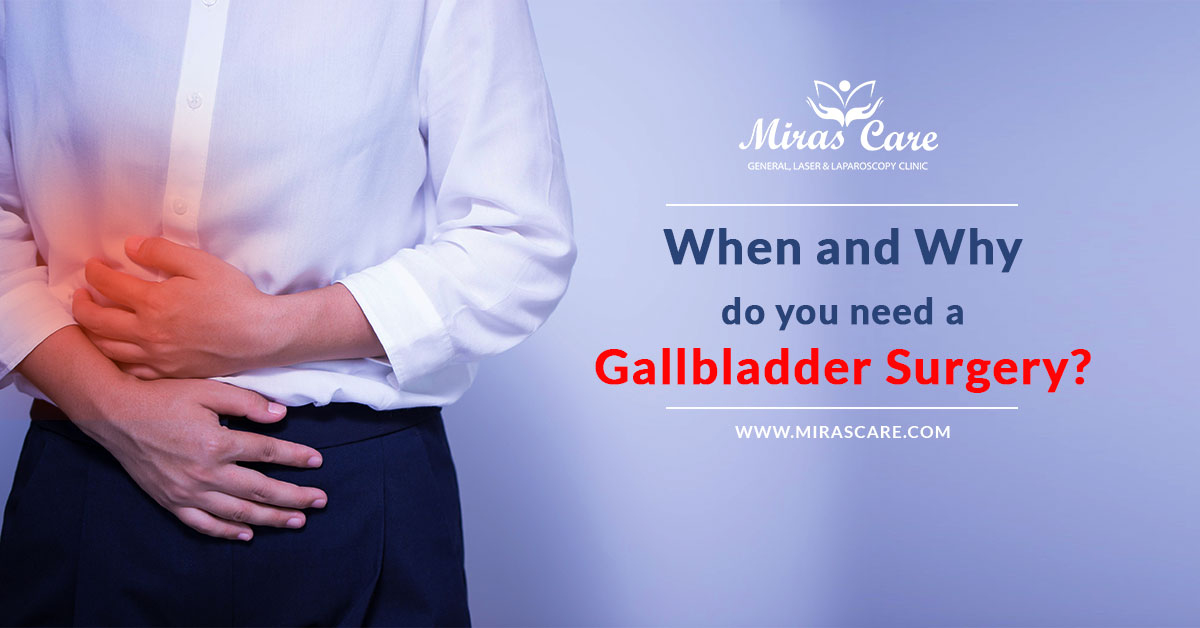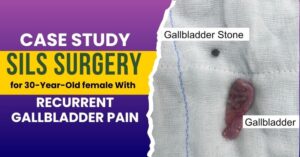Gallbladder Removal Surgery
Gallbladder removal surgery is apparently the best solution to permanently get rid of the troubles caused by the gallbladder. This tiny organ might not get enough attention from you, but once affected, it can bother you with excruciating pain.
Gallstone (presence of stones in gallbladder) is the most common problem related to this organ. Gallbladder cancer and inflammation in the gallbladder are other serious issues that can occur. Either of the problems calls for a gallbladder removal surgery.
And in this blog, we tell you about the types of gallbladder surgery. But before we reach there, let us tell you about some basics about the gallbladder and whether it is safe to remove this organ.
The Function of the Gallbladder and How Its Removal Affects Your Body
To begin with, the gallbladder is a small organ positioned in your upper abdomen. This petite organ is a part of your digestive system. It collects and stores the bile juice – a yellow-colored liquid that breaks down food to aid digestion.
But what happens after the gallbladder is removed during the surgery? Well, let us tell you that it does not affect your digestion process.
Wondering how?
Well, because the bile juice directly starts flowing from the liver to the small intestine, thus continuing the digestion process in a normal manner. So many patients live normal lives despite having their gallbladder removed at a younger age.
When and Why Do You Need a Gallbladder Surgery?
As mentioned above, gallstone is the most common cause that requires you to undergo gallbladder removal surgery.
The stones present in this organ are either harmless that you won’t even know that they exist, or they can make your life hell by causing excruciating pain. There are certain medicines that dissolve the stone but they can take years to do so, and in most cases, the stones reoccur.
In the case of severe inflammation, infection, or cancer, the gallbladder is better removed than stitched to treat owing to its delicately small size.
Chronic pain in the upper-right part of the middle of the abdomen is the first sign that suggests some trouble in your gallbladder. The pain is sharp and may persist for hours. The stark pain is also felt in the back or in the tip of your right shoulder blade. Fever, indigestion, and nausea are other symptoms.
Types of Gallbladder Removal Surgery
You will undergo tests like an ultrasound to diagnose the problem.
Cholecystectomy – The Gallbladder Removal Surgery
The gallbladder removal surgery is called a cholecystectomy. There are two types of Gallbladder Removal Surgery. They are:
3D Laparoscopic Surgery:
Using the latest technology, we can perform Laparoscopic surgery under real-time 3D vision, this aids the surgeon to perform very precise surgical maneuvers and reduce the chances of complications even under complicated and complex scenarios.
1. Laparoscopic Cholecystectomy:
It is a rather modern type of surgery to remove the gallbladder. It is a less invasive surgery that takes lesser time to heal and ensures quick recovery. In this procedure, instead of one large incision, the surgeon makes four tiny cuts in the abdomen.
A laparoscope (a mini telescope attached to a camera) is inserted through one cut. Through its lens, the surgeon is able to see the interiors of the abdomen.
Now, the devices are inserted through other incisions to perform the surgery. The surgeon cuts free and takes out the gallbladder through one of the cuts. The surgery is performed under anesthesia and usually takes somewhere between 30-60 minutes.
However, there are some patients who cannot undergo laparoscopic gallbladder surgery. In such a scenario, open gallbladder surgery is performed.
2. Open Cholecystectomy:
It is the traditional open surgery that involves making a 4-6 inch long cut in your abdomen to take out the gallbladder. The abdomen is cleaned with an antiseptic so as to reduce the risk of any infection. After the gallbladder is carefully removed, the surgeon closes and stitches the incision. This surgery is done under anesthesia, which means that you will not feel pain while the surgery is being done.
However, there are a few disadvantages to this type of surgery. For instance, it requires a longer period for hospitalization and recovery. It is an invasive surgery that ends up giving you a big stitched wound, which takes time to heal and pains a lot.
Open gallbladder removal surgery is recommended for patients who cannot undergo laparoscopic surgery
Here are the scenarios when you may have to switch or opt for open gallbladder surgery:
- You are overweight.
- Your gallbladder is damaged (has scars or inflammation)
- Excess bleeding during surgery.
- There is scar tissue in your abdomen from an earlier surgery.
What to Expect after the Gallbladder Surgery?
You will be relieved from the hospital in a day or two after the surgery. And it is common to feel pain at the incision sites or in the abdomen for a few days. You may also feel some pain in your shoulders, but it mostly stays for the first two days only.
As for physical activities are concerned, walking and limited movement are suggested. However, avoid doing any strenuous activity.
Don’t take painkillers unless they are prescribed by your surgeon. And see your doctor if you see witness any of the symptoms post-surgery:
- Fever
- Unbearable pain near the incision sites
- Yellowness of skin
- Bleeding, swelling or redness from the incision site
- Pain behind the chest bone
- Constipation or no bowel movement for 3 days
If you or any of your loved one requires a Gallbladder surgery, we at Mirascare ensure to provide a seamless treatment process.




